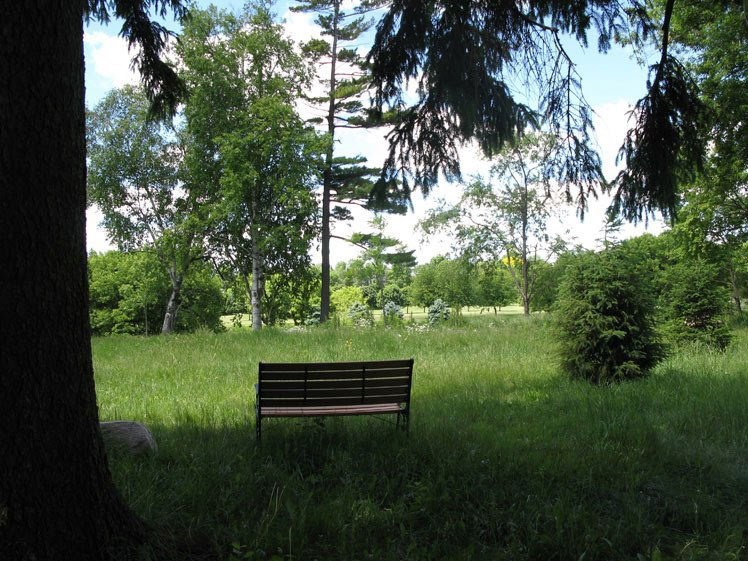A local resident is looking to establish Ontario’s first free-standing natural burial cemetery on private property in Grey Highlands.
“When I think about the reason that I want to establish a natural burial cemetery, it's pretty simple - I wanted to provide a space to soften the experience of death and loss on humans and on our planet,” said Sara Benjamin.
Benjamin was raised on a farm near Stayner and said she developed an interest in natural burial in 2015 after seeing the film, A Will for the Woods.
“The thing that first drew me to natural burial was the way that it returns our bodies to the earth in a way that is mindful, it's simplified, and it's beautiful,” Benjamin said. “When we invest in natural burial cemeteries, we have an opportunity to make our final act, a profoundly beautiful life-giving legacy.”
According to Benjamin, natural burial cemeteries are suggested to be the most eco-friendly way of caring for the dead. The body is placed in a biodegradable casket with no embalming or vault surrounding the casket; the cemetery does not have individual markers, but rather a communal marker shared by all; and above ground, the natural habitat is protected.
“Creating beautiful, natural spaces for humans to be buried in, to visit, and to honour our dead is a step in the right direction,” she said.
Benjamin made a presentation to the Grey Highlands council in February where she proposed turning 10-acres of her 100-acre property, which is located approximately three kilometres south of Duncan on the Blue Mountains Euphrasia Townline, into a free-standing natural burial cemetery.
Currently Ontario has four hybrid natural burial cemeteries located in Niagara Falls, Waterloo, Cobourg and Picton. These cemeteries are considered ‘hybrids’ as the natural burial cemetery sits within the larger traditional cemetery.
“Natural burial closely connects us with a really important part of our life journey and it's a lovely alternative to the currently embraced models that leave many people feeling just like disconnected consumers, as opposed to mindful participants in end of life choices,” she continued.
Susan Greer, executive director of Ontario’s Natural Burial Association said natural burials are nothing new, just new to today’s consumers.
“It’s the way many of our ancestors were buried before death care became commercialized, and many cultures (such as Jewish and Muslim faiths) have always embraced this practice,” she said.
“Natural burial returns the body to the earth in a protected green space so the body can contribute to the earth’s renewal. The body is buried in a biodegradable casket or shroud in a natural burial ground. While below ground the body is nourishing the earth that fed it through life, above ground, the land is restored to its natural eco-habitat,” Greer explained.
“Our final act is giving back to the earth, as opposed to cremation, which burns fossil fuels and puts carbon in the atmosphere,” she added.
According to Ontario’s Natural Burial Association, 70 per cent of Ontario residents opt for cremation. However, cremation is not environmentally friendly as many assume.
The organization says the fuel required for one cremation is equal to filling a SUV tank twice and emits approximately 242 kilograms of carbon dioxide.
“Natural burials are better for the environment and they help combat climate change. I now see that our parting gift can be giving back to the earth that fed us through life,” Benjamin said.
She added that if established, she would like to build relationships with a local carpenter to provide the biodegradable caskets, a seamstress to make shrouds, a local flower shop to help infuse beauty into ceremony, and a neighbour with a backhoe to help with excavation.
She also noted that there is growing interest for this option and natural burial plans are being developed in 13 other Ontario communities, including West Grey and the North Bruce Peninsula.
“We can show other municipalities that natural burial grounds are the direction to go in. We can make a valuable contribution to people's life journeys by enabling their end of life choices to be reflective of their values in real and measurable ways,” Benjamin said.
All cemeteries – conventional, natural, green etc., must comply with the Funeral, Burial and Cremation Services Act, 2002 and associated Ontario regulations. They must also comply with any and all related municipal bylaws.
However, Benjamin’s land sits outside of the municipality's jurisdiction, falling under the Niagara Escarpment Commission, zoned escarpment rural.
“Council's only role in relation to this is for them to say, yes, we believe it's in the public interest or no, we don't believe it's in the public interest,” said Grey Highlands clerk, Raylene Martell.
According to a related staff report presented to the council in early May, in the past, Grey Highlands council has used the planning process to determine public interest, however because this property is in the Niagara Escarpment, no Grey Highlands planning process will be triggered.
Once the municipality has provided its approval, Benjamin will be required to apply to the Registrar, Bereavement Authority of Ontario for consent to establish the cemetery and obtain a licence to operate the cemetery.
The licence to operate the cemetery will also only be issued once a Care and Maintenance Fund with $100,000 ($165,000 as of Jan 1, 2022) is established.
Grey Highlands council will be considering the request to establish a natural burial cemetery at 355310 Blue Mountains Euphrasia Townline during its June 16 council meeting.
The municipality is currently welcoming written comments from the public on the natural burial proposal until June 4. Correspondence can be sent to: [email protected].
